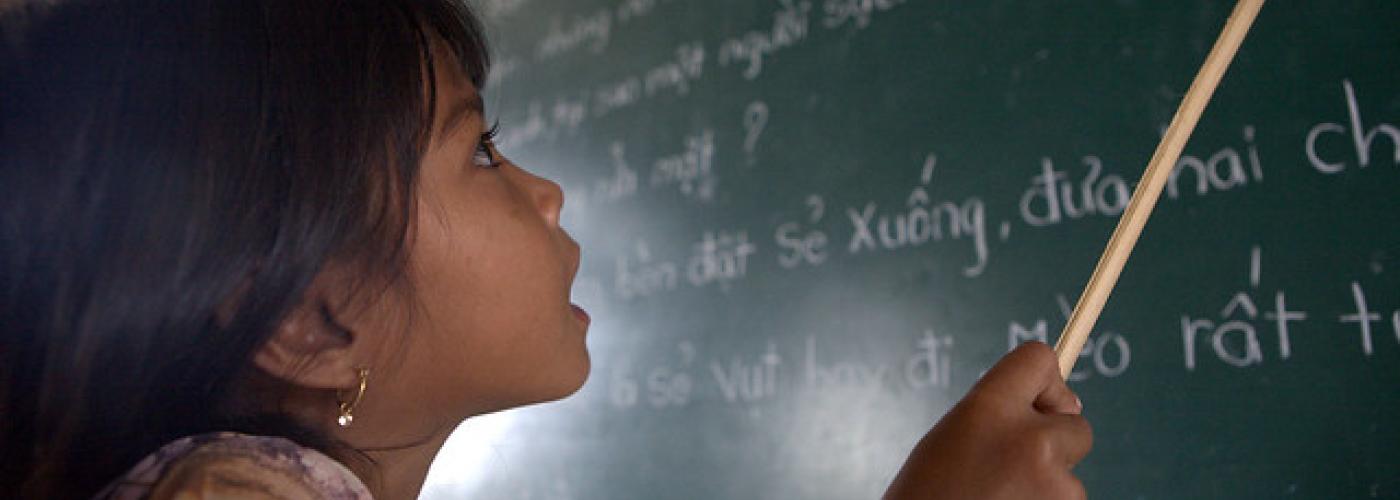Why Youth Skills? And Why Measure Them?
Image

In July, Marketilnks is spotlighting Youth Employment in observance of World Youth Skills Day. Check out this post on measuring youth skills development. This blog originally was published on USAID's EducationLinks website and was authored by Rebecca Pagel.
The UN’s World Youth Skills Day, observed this year on July 15, raises awareness of the importance of developing youth’s skills. USAID’s Office of Education prioritizes youth skills development and most recently has been working on how to better measure progress in this area.
We imagine that you might expect USAID’s Office of Education, the Agency’s technical leader on youth workforce development programming, to say: Youth skills are important to improving employability, reducing unemployment, increasing earnings, meeting the challenges of the youth ‘bulge’, and moving a country along on its Journey to Self-Reliance.
This is true, and we have strengthened our indicators to measure work outcomes for youth, focusing on how to better capture employment and earnings for youth in wage work or self-employment. But there’s more...
A Small Study: Questions for You
How about a small study to help us think it through? Here’s the research question: Why, if at all, is improving youth’s skills—academic, technical/vocational/professional, social-emotional/soft, etc.—important?
Let’s do a qualitative study to answer this question. First, we’ll consider everyone who is reading this blog to be our sample (not randomly selected, so let’s be careful about assuming our conclusions apply to all).
Please ask yourself the following interview questions. We wish we could sit face-to-face with you and discuss, but since this post is our mode of communication, consider the questions carefully before you move on:
- What skills were essential to obtaining the first job you had after completing your most recent degree? (Feel free to think about academic, technical, or soft skills, etc.)
- Are any of these skills essential for any areas of your life other than work (social, family, emotional, etc.)?
- If you did not have these skills (here’s our somewhat sloppy counterfactual) what areas of your life (work, social, family, emotional, etc.) would be different? How so?
Now, a little analysis: How many of you in our sample said that your skills were important only for work? How many of you thought that if you did not have your skills, only your work life would be different?
None? Oh, just three? Well, that tells us everything, doesn’t it? Okay, okay...maybe not everything. We need to be careful about generalizing from our non-randomly selected sample to the whole world. So let’s look at some real research.
What the Research Says
USAID’s Chief Economist, Louise Fox, has made the point before in the context of women’s economic empowerment, and we echo it here for youth workforce development: youth employment is only a “very narrow sliver” of youth development. Youth have social, familial, and emotional lives in addition to their work lives, and the skill building work in which USAID education programming engages is important for more than just young people’s work lives:
- USAID’s Key Skills for Cross-Sectoral Outcomes suggests the importance of skills beyond a youth’s work life. This paper suggests the importance of soft skills for sexual and reproductive health and violence prevention, in addition to positive workforce outcomes.
- YouthPower’s Systematic Review on Positive Youth Development highlights that addressing youth’s multiple skill needs also helps contribute to the increased agency of youth, which is a key component of youth’s development.
- Research from Columbia University on soft and social and emotional skills programming in high-income contexts estimates high returns—measured not only by employment outcomes but also by sexual risk behaviors and aggression, for example—of soft skill programming to society. Yes, that’s right, not only to the individual but to society.
USAID’s Education Policy: Skills Development and Measurement
This evidence is the foundation for why the 2018 USAID Education Policy focuses on the development of youth skills as a key priority. This evidence is also why USAID is releasing new indicators in FY 2020 that focus our measurement efforts not only on youth’s employment and earnings, but also on the development of their soft, reading, technical/vocational/professional, math, and digital literacy skills. And this evidence is also why we need more thoughtful programming and measurement of youth skills and related life outcomes.
It is not enough for USAID’s youth workforce programming to focus only on skills for work. Instead, we must galvanize the development community and programming around an understanding of youth as students, community leaders, parents, children, spouses, boyfriends/girlfriends, innovators, artists, and athletes who will contribute—or not—to their societies beyond the narrow sliver of their work lives.
But more and better evidence is necessary. While we have made a good start, it is essential to more rigorously measure the effects of youth skill-building work on multiple outcomes. The youth workforce development field has too often given too little attention to careful and rigorous measurement of skills and outcomes in the long-term, but we must do so to improve our understanding of the influence of skill building on multiple facets of youth’s lives.
USAID will continue to program, measure, and report on employment and earnings; these are important outcomes of USAID’s youth workforce programming. But we will also program, measure, and report on skills and their relationships to other meaningful outcomes that strengthen individuals, families, communities, and societies. This broader focus on youth skills can contribute to moving a country ahead on its Journey to Self-Reliance.


